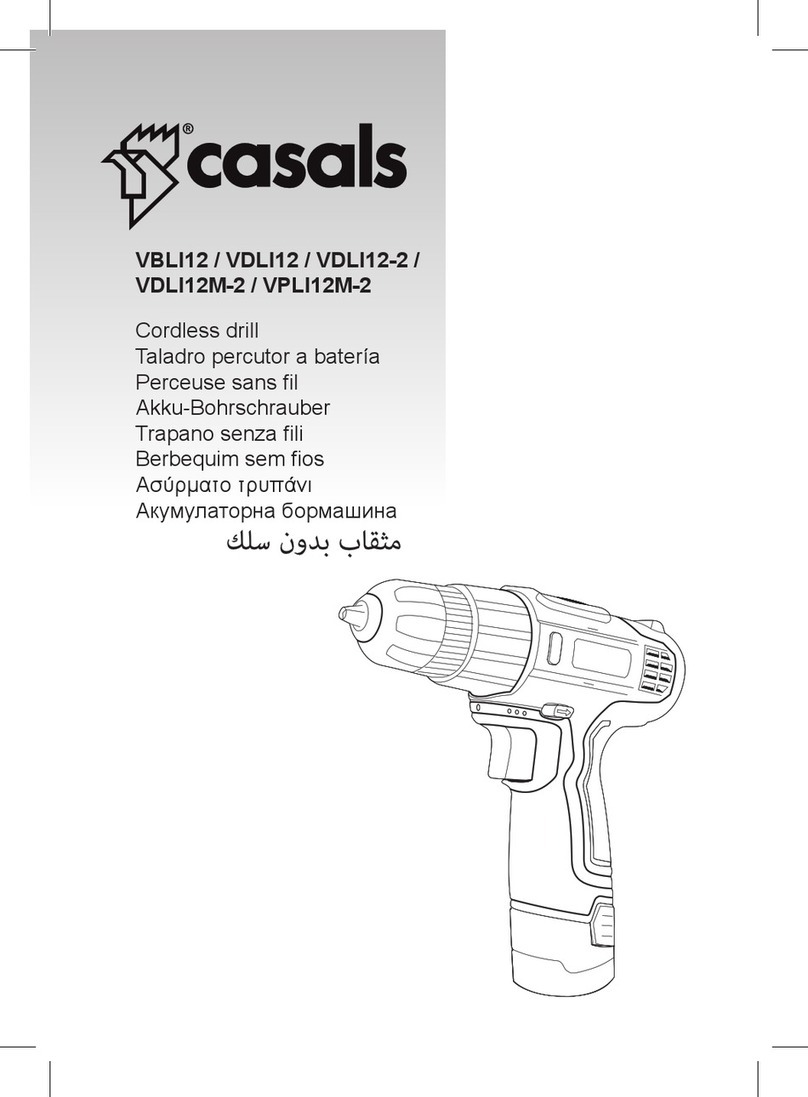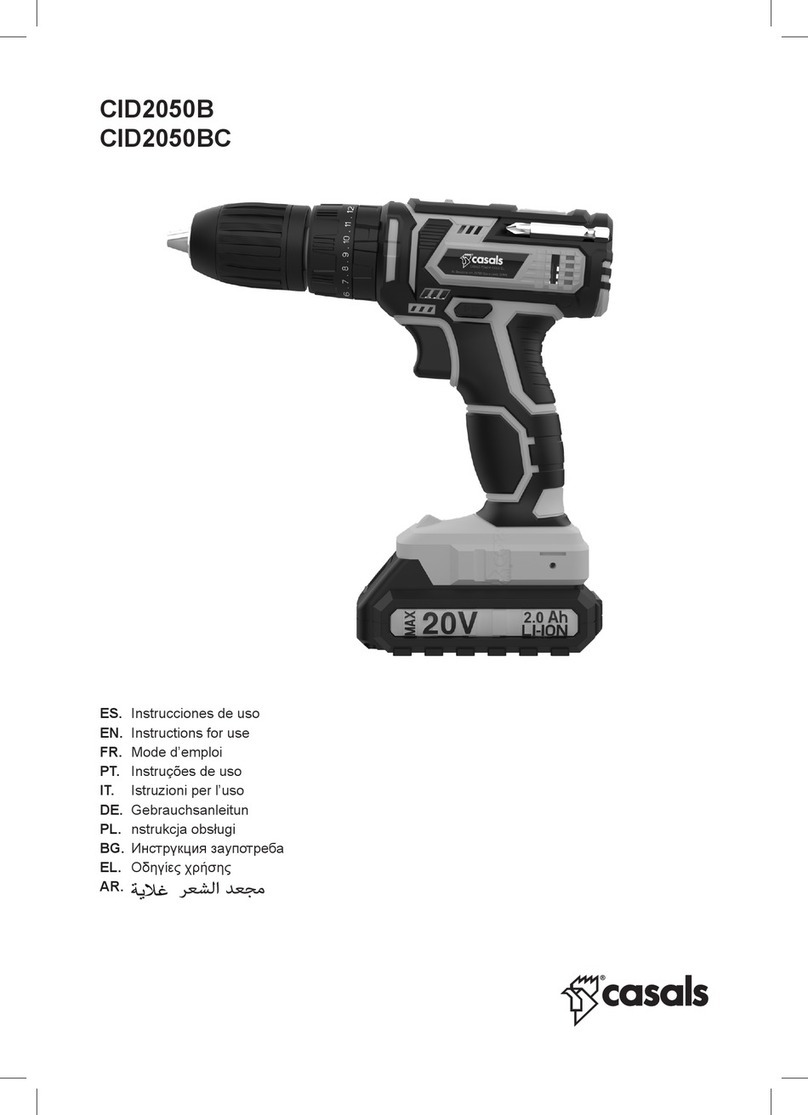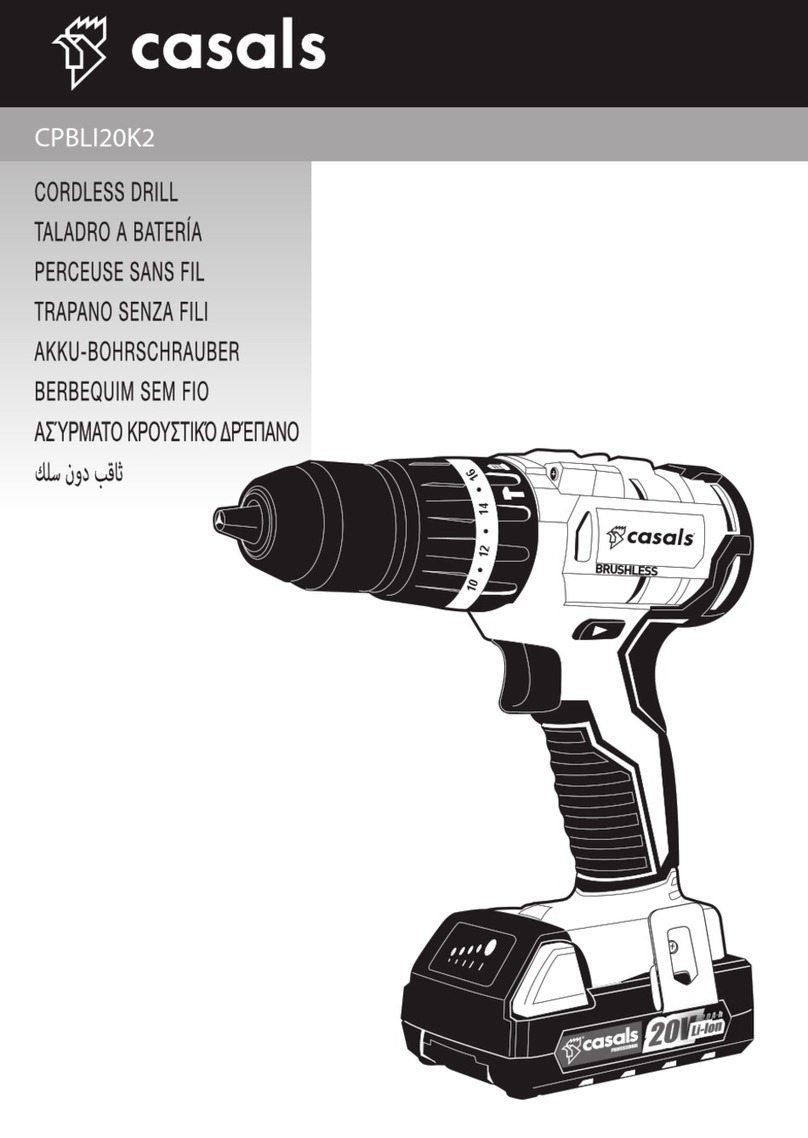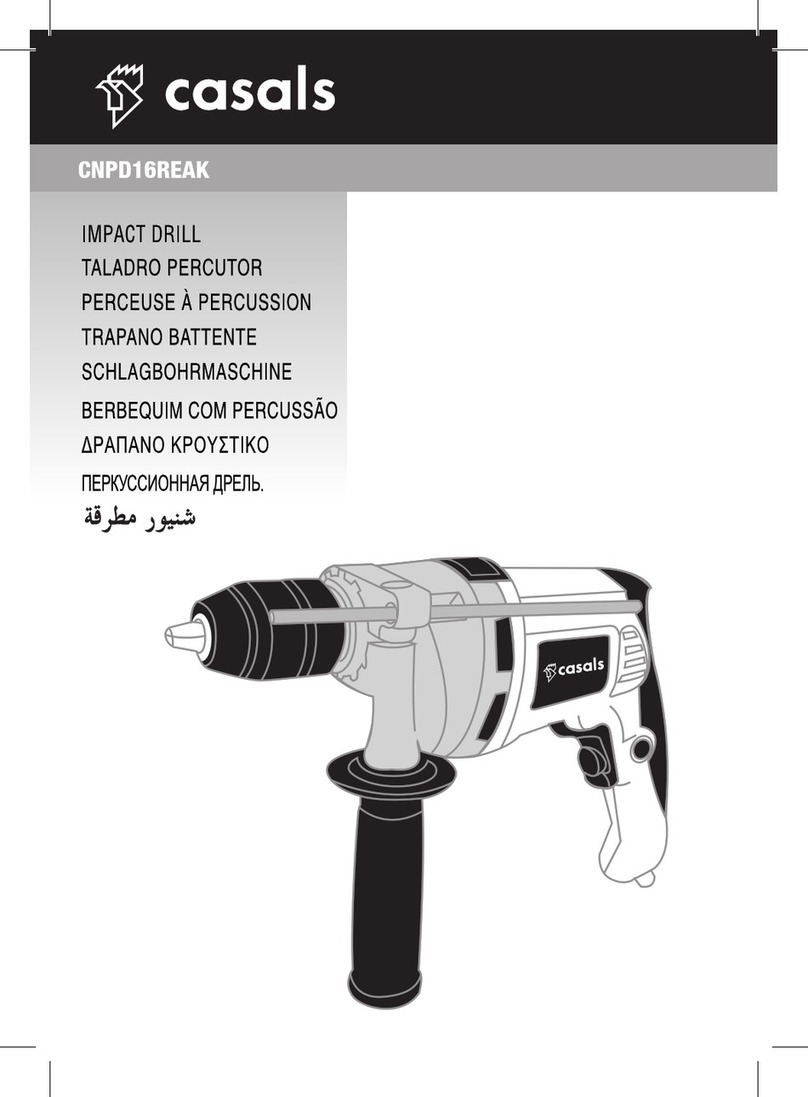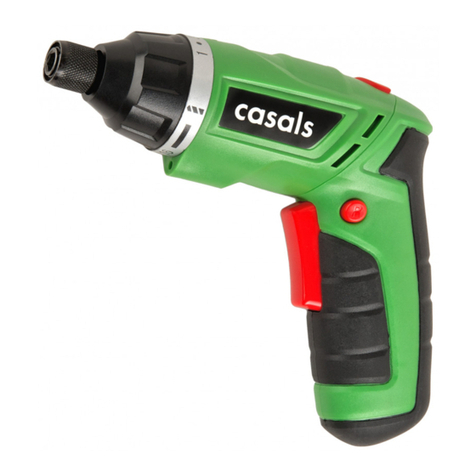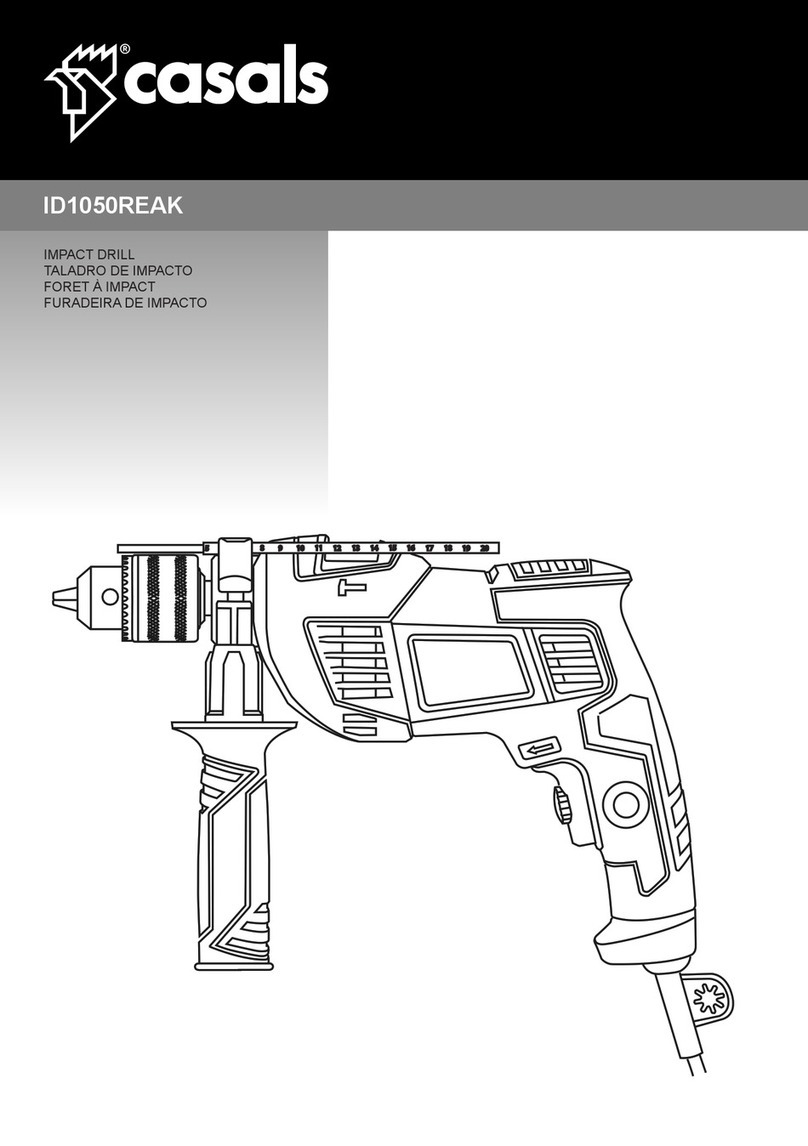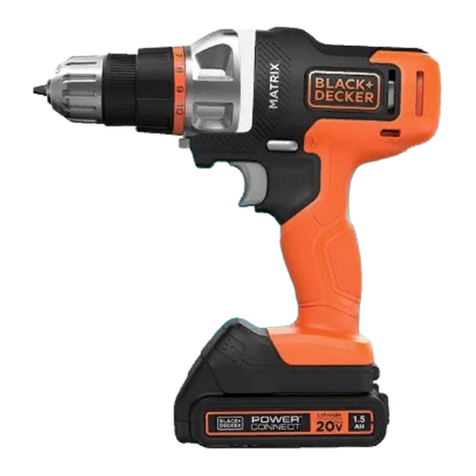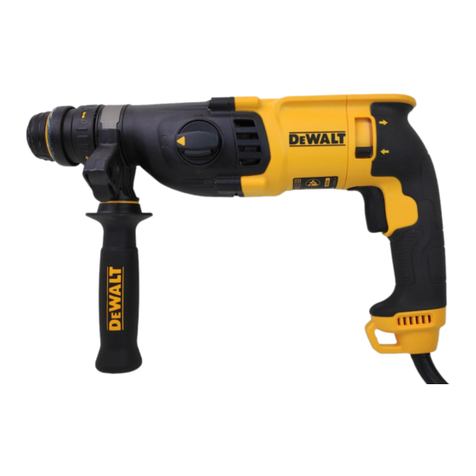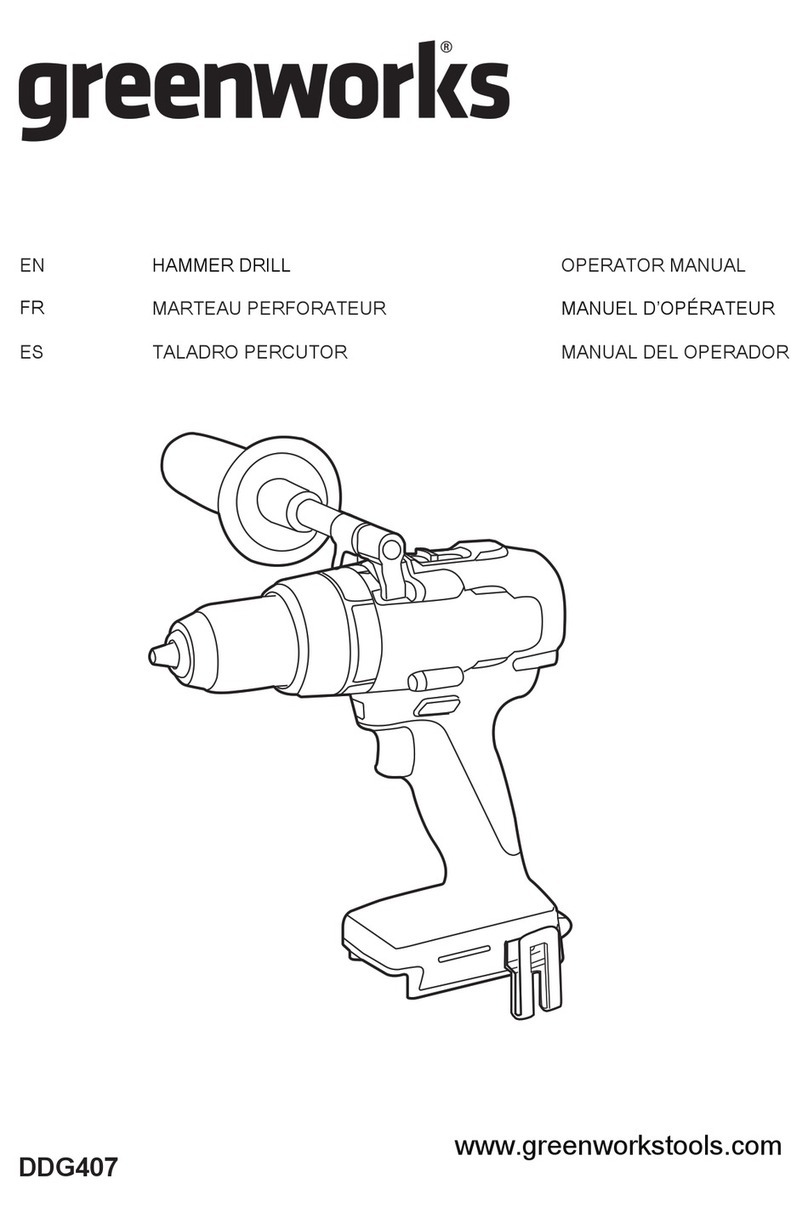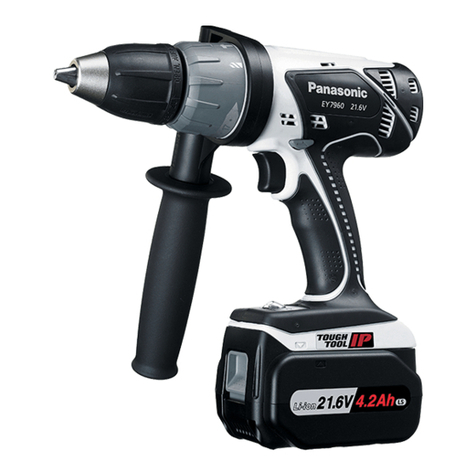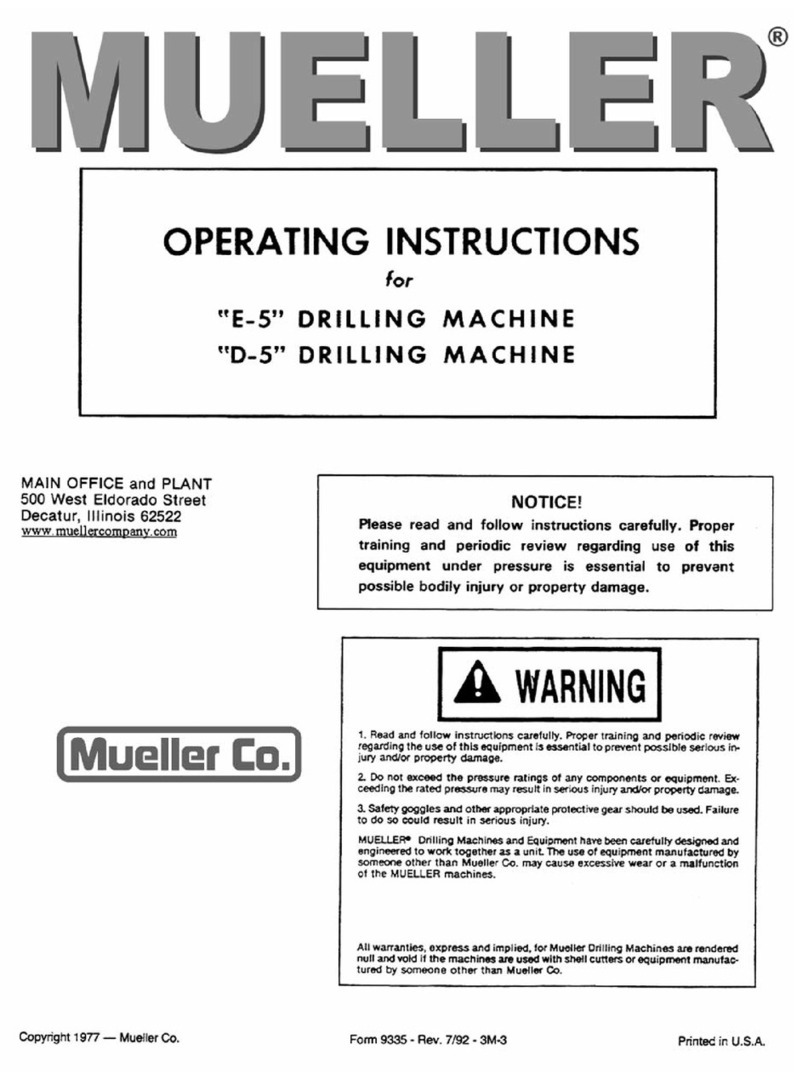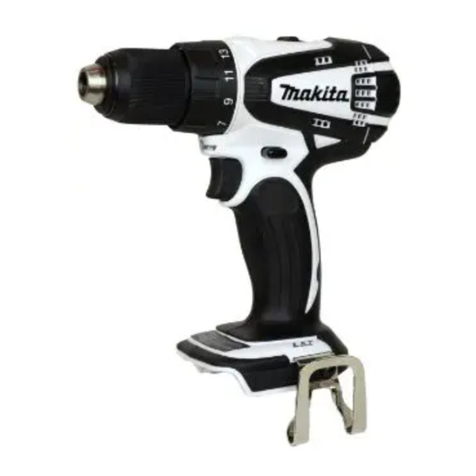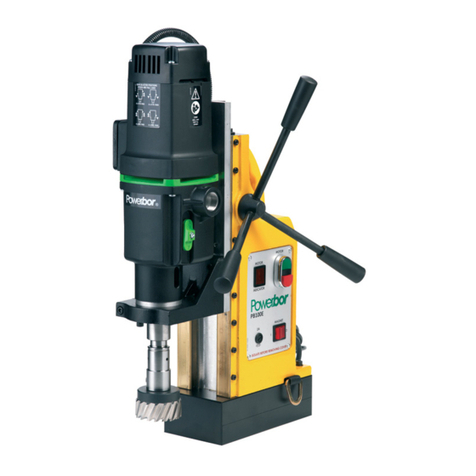
(grounded) power tools. Unmodied plugs and matching outlets
will reduce risk of electric shock
-Avoid body contact with earthed or grounded surfaces, such
as pipes, radiators, ranges and refrigerators. There is an in-
creased risk of electric shock if your body is earthed or grounded
-Do not expose power tools to rain or wet conditions. Water
entering a power tool will increase the risk of electric shock
-Do not abuse the cord. Never use the cord for carrying, pull-
ing or unplugging the power tool. Keep cord away from heat,
oil, sharp edges or moving parts. Damaged or entangled cords
increase the risk of electric shock
-When operating the power tool outdoors, use an extension
cord suitable for outdoor use. Use a cord suitable for outdoor
use reduces the risk of electric shock
-If operating a power tool in a damp location is unavoidable,
use a residual current device (RCD) protected supply. Use of
an RCD reduces the risk of electric shock
PERSONAL SAFETY
-Stay alert, watch what you are doing and use common sense
when operating a power tool. Do not use a power tool while
you are tired or under the inuence of drugs, alcohol or med-
ication. A moment of inattention while operating power tools may
result in serious personal injury
-Use personal protective equipment. Always wear eye protec-
tion. Protective equipment such as dust mask, non-skid safety
shoes, hard hat, or hearing protection used for appropriated condi-
tions will reduce personal injuries
-Prevent unintentional starting. Ensure the switch is in the
off-position before connecting the power source and/or bat-
tery pack, picking up or carrying the tool. Carrying power tools
with your nger on the switch or energizing power tools that have
the switch on invites accidents
-Remove any adjusting key or wrench before turning the power
tool on. A wrench or a key left attached to a rotating part of the
power tool may result in personal injury
